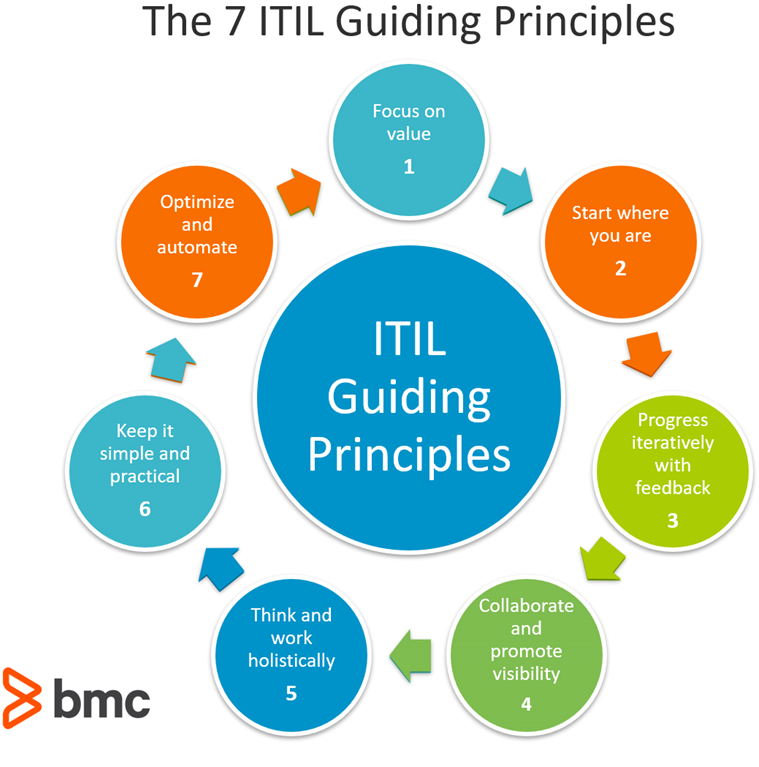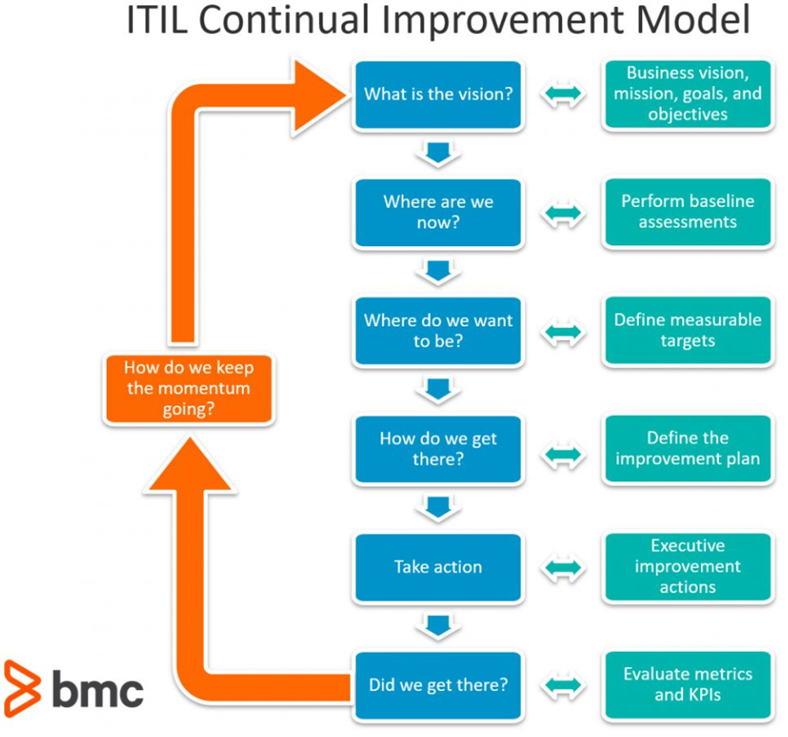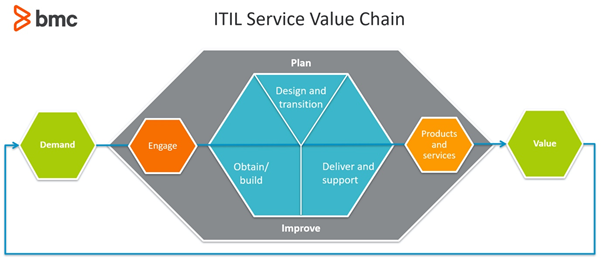With its much-needed revamp in 2019, ITIL is determined to remain the go-to resource for IT service management. Many years had passed since ITIL V3 and a lot of cynicism crept in, questioning whether this guidance was relevant in the age of AI, cloud, and mobile. In 2017, a contributor on CIO.com summarized this sentiment, saying these trends “rendered ITIL a relic of the past”.
Fortunately, many agree that ITIL 4 redeems itself by modernizing the approach to ITSM. This modernization focuses, crucially, on integrating now-standard and emerging practices such as Agile and DevOps. ITIL 4 also values an implementation that’s more flexible and less rigid compared to prior versions.
ITIL offers up a variety of best practices—each “a way of working that has been proven to be successful by multiple organizations”. Still, in my experience, a mix of flavors rather than a single best practice is the best approach for ITSM today. Here, I’m sharing my favorite ITIL best practices that quickly and flexibly contribute to a better customer experience.
Download Now: ITIL 4 Best Practice e-Books
These all-new for 2020 ITIL e-books highlight important elements of ITIL 4 best practices. Quickly understand key changes and actionable concepts, written by ITIL 4 contributors.
ITIL supports IT service management
ITIL maintains its global status as the leading ITSM reference. As long as organizations around the world look for ways to improve customer experience, service delivery, and business alignment, there remains a need for ITIL (plus other guidance and standards) in enterprise service management.
When adopting ITIL, the biggest piece of advice is to avoid a cut-and-paste operation. Instead, embrace a change in culture and mindset for dealing with customers and people involved in the service lifecycle. Remember that “ITIL is a framework of guidance; it isn’t something to be implemented; everything you do with ITIL and ITSM is about cultural transformation”.
Examining this latest ITIL iteration, I find four best practices (approaches) provide the fastest route to recouping value in an organization’s ITIL adoption journey.
1. Adopt the ITIL Guiding Principles
One of the best things in the updated ITIL guidance is the concept of ITIL guiding principles. These seven principles embody the ITIL core message and support excellence in service management regardless of industry, size, or technology approach. These recommendations are universal and enduring, so adopting them to your organization’s ITSM framework offers a quick and easy route to benefitting from ITIL.

It is also good to note that the ITIL guiding principles are reflected in other methods and philosophies such as Agile, DevOps, and Lean. Any organization that already embraces these practices can easily continue along the same journey.
However, adopting these seven principles only, without the rest of the ITIL guidance, will invariably lead to challenges. Consider a principle like ‘Start where you are’—if your current ITSM adoption has been taking you in a wrong direction all along, you may want to reconsider this principle.
Bonus tip: Consider each guiding principle individually: apply the principle exactly in your current ITSM approach, then consider it together with the rest of the guidance. Customize this guidance to meet the needs of your customers and your business.
2. Adopt the Continual Improvement Model
Continual improvement is an ITIL mainstay. In ITIL 4, the concept gets revamped into a 7-step continual improvement model. You’ll start with understanding your organization’s vision, move into identifying gaps, planning, and executing activities to reach your target (desired) state, and end with reviewing and entrenching the new state into your culture. The model is iterative in nature and allows for critical judgement of each step with an option to reevaluate and go back if needed.

The continual improvement model is very useful for any enterprise service management improvement initiative that benefits customers and the business. This model can target specific improvements in any of the four dimensions:
- Organizations and people
- Information and technology
- Partners and suppliers
- Value streams and processes
Bonus tip: When it comes to large scale initiatives, involve senior leadership to obtain commitment and support—both the necessary resources and the cultural buy-in to get the entire organization on board.
3. Adopt the Service Value Chain approach
Popularized by the worlds of Lean and Six Sigma, value streams have become a vital tool in modelling and understanding how your business realizes value for its customers via internal and external activities and processes. ITIL 4 embraces this concept with its introduction of the service value chain, “an operating model which outlines the key activities required to respond to demand and facilitate value realization through the creation and management of products and services”.
The ITIL 4 service value chain (SVC) has six archetypal activities:
- Plan
- Improve
- Engage
- Design and transition
- Obtain/build
- Deliver and support
Each activity can be combined with others, so you can map value streams for scenarios that involve several of the activities. Consider processes like creating a new product or responding to a request or incident.

Visualizing the journey of ITSM activities through value stream goes a long way in improving customer experience. You’ll look at each flow in detail, using an outside-in perspective that seeks to maximize customer value. Your process change may result in deploying automation, minimizing waste or inefficiencies, and removing slow or unnecessary delays and handoffs.
Bonus tip: Involve all stakeholders in the mapping and analysis of value streams to ensure that decisions holistic and customer-centered.
4. Adopt the Management Practices guidance
ITIL v3 mapped 26 processes along the ITIL service lifecycle in a restricted, silo-like fashion. ITIL 4 moved away from this rigidity, introducing flexibility with the brand new Service Value System (SVS) and 34 management practices that apply across the whole value chain.

ITIL 4 defines a management practice as a set of organizational resources designed for performing work or accomplishing an objective. Like the continual improvement model, the SVS can consider any or all your organization’s four dimensions (people, technology, partners, and value streams).
While it might seem straightforward to pick up a manual on a practice, like incident management, and simply implement it, remember that every practice is part of a system. Therefore, changes to one aspect that are not thought-out can bring unforeseen negative impacts to customers at the tail-end of the value delivery activities. For instance, a particular type of incident might be escalated through multiple teams rather than via swarming for faster identification of symptoms and determination of best team to handle it.
Bonus tip: Understand holistically the guidance behind a practice and involve all stakeholders in analyzing the impact of implementing its aspects, particularly from a customer benefit perspective.
Incorporating ITIL into your ITSM environment can be straightforward and result in quick-to-see customer and business benefits—simply start with these four ITIL best practices and you’ll be on your way.
Additional resources
For more information on incident, problem, and change management, browse our ITIL 4 Guide, located in the right-hand menu, with 20+ related articles. Ready for the only end-to-end ITSM and ITOM platform for your company? Explore BMC Helix.








